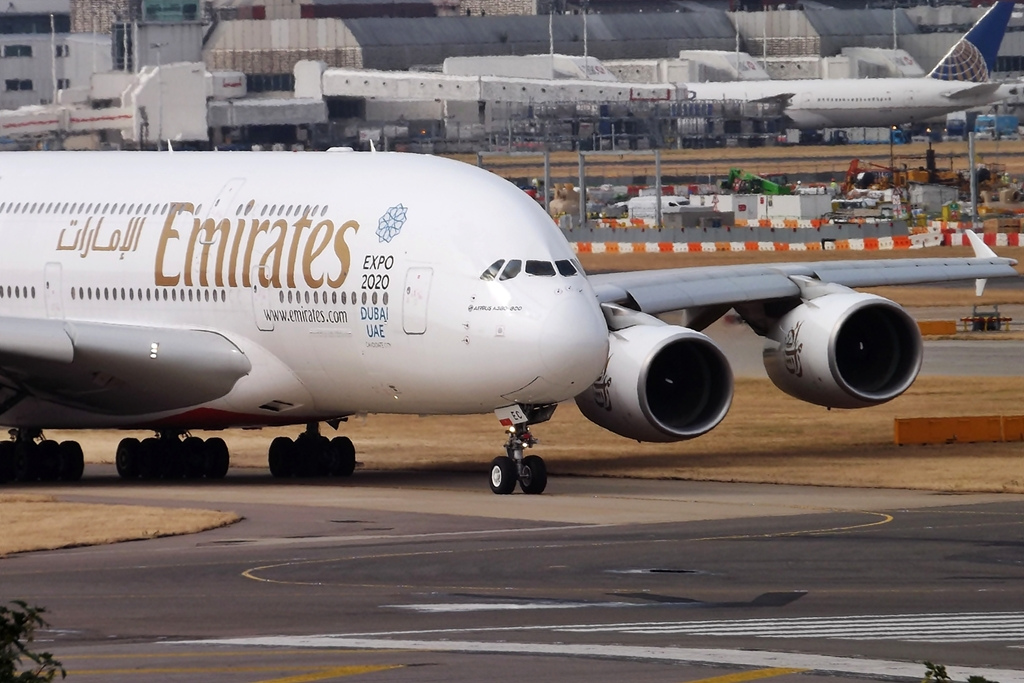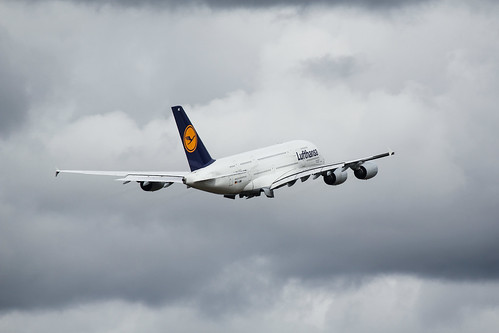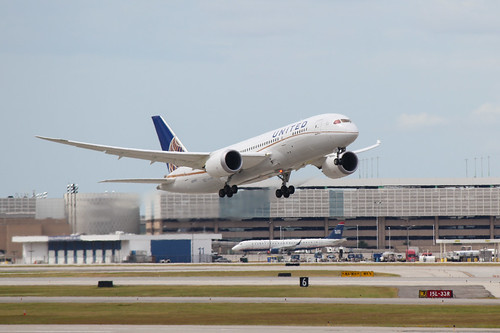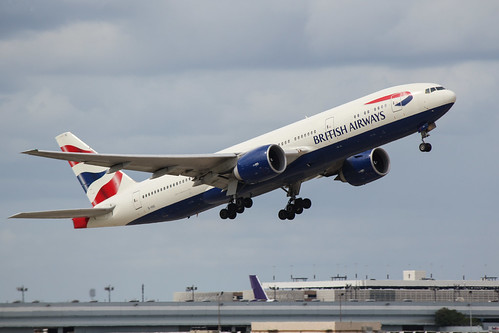When I lived in Houston a buddy and I would grab tacos on Tuesdays together. We tried a few different places but Taconmadre and Karanchos were our favorites. The trompo tacos at Karanchos were something special.
Tag: houston
Texas Monthly’s Pointless Article on United

Texas Monthly’s recent piece, “Up in the Air” by Loren Steffy, has left me scratching my head. The by-line is “The 2010 sale of Continental Airlines has left Houston in a holding pattern” so I was expecting a look into dealings with the city or the airport. I braced myself for an investigative long-read.
The first two paragraphs focus on how terrible it was to lose Continental to the merger and then United to Chicago; How cultures are a problem.
As a management consultant, Heiland knew that the biggest hurdle for the two companies wouldn’t be integrating systems, processes, or technology but reconciling their cultures. “When it was announced that the headquarters would be in Chicago, I felt the war was lost.”
Then all of the sudden the article becomes a brief history of Continental. Details about former CEOs and what they did or didn’t do for the airline. All of it reads like a Wikipedia job. Then near the end there is some more meat.
And so, in 2010, Smisek struck a deal. Though he called it a merger, he basically sold Continental to United; the name “Continental” disappeared and the Houston headquarters was essentially vacated. Continental’s management team was supposed to be in charge, but it never took root in the cold climes of Chicago. “The Continental culture was a terrible thing to risk,” Bakes says. “United’s history is one of bureaucracy and arrogance, and it ended up culturally being more dominant.”
I get it, there are definite service issues with United. I’m not convinced it had anything to do with “culture” at either airline but more to do with the management not fostering a relationship with the front line staff and building trust. It has lead to distrust and unhappiness for the people who travelers see first and deal with most in their travels: flight attendants, agents, and other ground staff. Morale has been in the mud and it shows. The new CEO, Oscar Munoz, who is on medical leave due to a recent heart attack, mentioned the morale problems and customer service issues immediately after taking the job.
On another note, the part about the Houston offices being vacated is at best an oversight or at worst, poor research. There are a large number of employees who still work in downtown Houston. Just fly a Chicago-Houston morning flight or an evening Houston-Chicago flight, there are a lot of United employees commuting to or from the Houston office.
The whole article reads like a whine and never addresses the by-line. How is Houston in a holding pattern? If anything, United has helped the city before the merger and after. United has committed to paying for at least part of the renovations taking place at Terminal B and C at IAH. The airline also plays a crucial role in attracting other carriers to the city. Their membership in the Star Alliance means that other airlines can codeshare with them, drawing those carriers to offer service to airports where United is located to connect to surrounding cities. EVA, ANA, Singapore Airlines, Air China, Lufthansa and Avianca all offer service to IAH, building on the connections that United offers. And soon there will be a Houston-Auckland flight on Air New Zealand, another Star Alliance partner.
If United had truly left Houston in a holding pattern, it would have happened in a similar fashion to what they did to Cleveland or what Delta did to Cincinnati. Nostalgia is always fun to discuss and reminisce about, but the Texas Monthly article was far from that. I would have been much more of a fan had Texas Monthly found and licensed a bunch of old IAH and Continental photos and just told the history of the airline and the airport. Instead it was a let down.
Will the Emirates A380 Cause Houston to Suffer?
An OpEd in the December 12, 2014 Houston Chronicle by a United Airlines employee really has me scratching my head. In it, Mark Segaloff posits that Emirates’s status as an airline hinges on them being state owned and that they are able to hurt U.S. airlines because of their use of the Import/Export bank to finance their aircraft. He continues, stating that state-owned airlines cause domestic U.S. carriers to lose business and suffer, costing jobs. While my heart is with Mr. Segaloff, my head is not.

It is true that there has been some concern about state-owned airlines coming into the U.S. and hurting domestic carriers. Even European carriers have stated that the Middle East carriers pose a serious risk to their business in the region. Here’s the kicker though, the European carriers are really the only ones with skin in the game. They are the ones with multiple flights to multiple destinations in the Middle East. U.S. carriers fall well behind when it comes to service to places like Dubai, Abu Dhabi, Doha, Kuwait City and others. In fact, United could not make their Washington-Dulles to Doha, Qatar (with a stop in Dubai) route work, so they pulled that service.
Mr. Segaloff’s key point is that the Emirates flight will cost Houston jobs. I fail to see any facts in the article as to why that would happen. United offers a once daily flight to Dubai from Dulles. If they want to compete directly for those dollars from potential customers out of Houston, maybe start non-stop service? Maybe offer a product that is not being degraded by installing slimline seats, reducing seat pitch, and generally making the travel experience sub-par. I know that Mr. Segaloff would probably retort, “But they are a state-owned airline with all the money in the world to make service improvements.” to which I would simply give him a link to United making a record profit in Q3 of 2014. There seems to be some money for improvement there, yet United offers 2-4-2 seating in business class on the Dubai flight. No thanks, I would rather take the non-stop from Houston (avoiding Dulles) in 1-2-1 seating on the A380. United does offer a number of one-stop options to a number of Emirates destinations via their antitrust immune joint venture with carriers such as ANA and Lufthansa. Granted, the service standards are not the same as Emirates but there are options that make money for United and their partners.
Something that Mr. Segaloff fails to mention is that the Emirates service to Houston is not new, it is simply bigger now. Truth be told, Emirates used to offer two daily flights to Houston from Dubai and with those two flights they actually had more seats (532) flying to Dubai than they do now with the A380 (489/517 depending on version). Where were the complaints when Emirates was running that second flight?
There have been a number of announcements of service to Houston by carriers that are not state-owned and not from the Middle East but these seem to do little to upset employees. But from an airline business perspective, these new routes are the worrisome ones. Korean has started non-stop service to Seoul, which I had heard was off to a rocky start but is doing better now. ANA announced service to Tokyo, EVA has schedules loaded to Taipei, and there are rumors that British Airways wants to bring an A380 to Houston for one of their two flights a day. ANA and EVA are Star Alliance partners with United, but Korean brings a good product and a fantastic network in Asia. Where is the uproar against that?
The Import/Export Bank is actually a valid concern, especially when the money is not spent the way it was meant to be spent, helping a foreign company grow by buying American goods. However, I do not think Emirates has any problem letting that money fall away. In fact, that money is specifically for Boeing jets, not for the Airbus A380 that Emirates is bringing to Houston.
I think one place where Mr. Segaloff could apply is argument is to the new Emirates flight linking New York City with Milan, Italy. This is a city pair that is served by two U.S. carriers, Delta from JFK and United from Newark. Now you have a third foreign carrier on the route who is trying to bring down the prices but not having much success. But I do not think it’s a question of letting foreign carriers operate routes from the U.S. to their respective hubs but whether or not those foreign carriers should be allowed to operate so called “Fifth Freedom” routes like New York-Milan ad infinitum. A number of carriers do this but use that fifth freedom flight to connect to their hub at the end. Out of Houston, Singapore Airlines flies to Moscow and then onward to Singapore. They are allowed to sell tickets to Moscow or Singapore out of Houston and they fill their plane. It’s a win/win. But when do those flights become anti-competitive? That’s for the FAA and DOT to sort out.
It is one thing to cry wolf when there is a valid concern but to say that Emirates and their A380 is going to hurt Houston is simply fiction. If anything, the Emirates service is helping strengthen the Houston economy by offering one-stop service to places that were previously unreachable without 2 or more stops. It will also continue to keep prices relatively competitive, which is good for the consumer. Sure, United may not like that, but how many passengers are they really flying a day to Dubai? How many are they flying to Europe for Middle East connections? United has a choice to make, they can up their game and focus on becoming a world class international carrier or they can relegate themselves to a middle-tier domestic focused carrier with a product that just barely keeps up with the competition. That decision will dictate the fate of those jobs that Mr. Segaloff is concerned about, not a single Emirates A380 flight a day to Houston.
EVA Air Taipei to Houston
*EVA has now made an official announcement of the Taipei to Houston route, so no more speculation.
It appears as though the much rumored EVA Air Taipei to Houston non-stop service is now official. Well, it’s loaded into the schedule it seems.
Airlineroute.net is reporting that the flight will start on June 21, 2015 and will have the following schedule:
BR52 Taipei to Houston departing 10:00PM arriving 11:25PM [Sun, Tue, Wed, Fri]
BR51 Houston to Taipei departing 1:15AM arriving 5:55AM (+1 day) [Mon, Wed, Thu, Sat]
The actual first flight will be on June 19, 2015 and that flight will arrive at IAH at 5:45pm. My guess is that this flight is timed as a positioning flight to get the aircraft to Houston to operate a day later while still allowing daylight for the press and local officiants to give their speeches.
Taipei to Houston is just under 8,000 miles and will take 14 hours and 25 minutes. The reverse, Houston to Taipei, will clock in at 15 hours and 40 minutes due to winds.
As far as service goes, EVA’s product looks really nice with full lie-flat seats in business and a very decent looking economy product. Ben Schlappig has a number of trip reports on his blog at One Mile at a Time and they are worth a look if you are interested in the EVA product.
It is great to have more options to Asia out of Houston and I think this flight is timed perfectly with connections in Taipei to allow you to get just about anywhere in Asia easily. This will also bring a little more competition to United (even though they are Star Alliance members) and maybe we’ll see some fare sales to Asia!
Houston, it’s not me, it’s you
Houston, I grew up on your suburban streets. You have been my home for the better part of 25 years. But, it is time for a change. We’ve grown apart the past five or six years, my work taking me to Chicago, New York, Atlanta, and D.C. for most of the week. I would return on Thursday evenings and enjoy a fun weekend. That has happened less and less the last couple of years and I blame you. You have grown too big too fast and I long for the Houston of my youth. Not only have you grown, you have become more expensive, yet added little in the way of benefits. All of this, coupled with the heat, has made you less enjoyable.
So, my family and I are leaving for greener (literally and figuratively) pastures in Oregon. We are giving up the 100 degree summers for 80 degree summers. We are giving up Saturday afternoon traffic for Saturday afternoon hiking. We are giving up newscasts where the nightly report is a shooting or stabbing for a nightly newscast where the big story is “What to do with all that cauliflower”. We are slowing down. We are going to enjoy life and our city, not have our city rush us from one place to the next, trying to keep up with the Joneses.
We are giving up this:
For this:
Yes, the news is true. We are leaving Houston for Portland come July. With my work being focused on traveling to customer sites, we can be based anywhere there is an airport. We are ready for a change of scenery. We are ready for somewhere where 30 minutes away we can go for a hike and see waterfalls like Multnomah Falls pictured above. I am willing to put up with rain and gray days for the opportunity to have summers that are spectacular and give my family the ability to be outdoors most of the time.
This has been a long time coming. We had our hearts set on moving to Berlin but I was not able to find an opportunity with my company there, so we started exploring cities in the U.S. We have always loved Portland and on our most recent trip back, we knew it was where we wanted to live. It is a big city that doesn’t feel like a big city. The downtown is well laid out, the people are friendly, and the weather, even when it is raining, is pleasant.
Of course, we are sad to leave our family and friends in Houston, but we will certainly be back to visit. This decision was not an easy one but we do believe we are doing what is right for us as a family.
That is all as far as Portland news is concerned. Now back to your regularly scheduled travel post!
SAS to Start Stavanger-Houston Service
SAS has announced they will start a new flight from Stavanger, Norway to Houston on August 20, 2014. This flight has been rumored for a while (no it’s not an April Fool’s joke) and it looks like it is coming to fruition. With ExxonMobil and Shell both having large facilities in Houston and Stavanger and Exxon’s Dallas campus, the flight is a great way for these companies to move their people between offices and offshore operations centers.
The flight will be operated by a PrivatAir 737-700 in an all business class configuration with 44 seats. The service will operate every day of the week except Saturday.
I will definitely be trying to move one of my reward tickets to Europe to this flight as soon as it becomes bookable later this month.
A Nice Day for Spotting
Fight Brewing Over O’Hare and Parallels with Intercontinental
There is a little bit of a fight brewing in Chicago over the future expansion of O’Hare.
Mr. Emanuel is at odds with airline boss Jeff Smisek over expansion of O’Hare International Airport. The CEO of United Continental Holdings Inc. jabbed at Mr. Emanuel recently, saying there’s no need to finish the multibillion-dollar project launched seven years ago.
Both men have the best interests of their businesses (Chicago is Mr. Emanuel’s “business”) in mind as they discuss the upgrades and expansion of Chicago’s O’Hare airport. Mr. Smisek is trying to control United’s costs by limiting their involvement in the expansion of the airport.
Mr. Emanuel can’t afford to let O’Hare fall behind rival airports. Mr. Smisek, on the other hand, has a different agenda. Unlike airline execs of the past, whose expansionist strategies dovetailed with the city’s desire for an ever-bigger O’Hare, he’s focused on the bottom line. He aims to boost profits by reducing capacity and competition in the airline industry, which has a long history of big spending, bloody fare wars and monumental losses. His merger of Houston-based Continental Airlines Inc. and Chicago’s UAL Corp. advanced those aims while creating an airline with unprecedented market power, the largest in the industry.
The interesting take away here is that apparently Mr. Smisek hates competition, yet none of this came up during the merger of United and Continental, which truly reduced competition. And why is no one bringing this up in the possible merger of US Airways and American Airlines? If competition is so important, then enforce it when carriers try to remove competition directly by merging.
All of this should be a warning sign to those looking at the airline industry from the outside. The airlines are struggling and they are trying to do all they can to survive. For some, that means merging, for others that means looking at operations and reducing capacity and for others it’s a combination of both. And this is not just a problem in the United States, just look at Lufthana’s announcements about reducing regional jets from the fleet, removing first class from some aircraft, etc.
Then there is this article I came across. What stuck out to me was this:
The terms of the debate are different in Chicago, but the bottom line is the same. What’s best for the city may not be best for United Airlines, and vice versa. There’s nothing particularly remarkable about a large company with near-monopoly control in a given market doing whatever it can to keep competition out. What is remarkable is that the argument to allow such competition would somehow be damaging to consumers is given any credibility.
We sure are getting lax with our throwing around of the “m”-word. United and American Airlines both have major hubs at Chicago O’Hare but that has not kept carriers from starting service to the airport. Virgin America has a number of new flights to and from Chicago. And neither airline has tried to limit Southwest’s operations at Chicago Midway. During the city council meeting in Houston the word “monopoly” was thrown around a lot as well. United does not control the Terminal D/E FIS facility. Other airlines are free to come and go as they please. Southwest used to even have gates at IAH. They gave those up to move to Hobby and in doing so, gave up their option to fly international flights. TACA, Aeromexico, and VivaAerobus all fly to Latin America from IAH, clearly, United does not have a monopoly. The other airlines’ operations are not huge but that isn’t because of a monopoly, it’s because IAH is not their hub. By this monopoly logic, American Airlines has a monopoly in DFW even though plenty of other airlines have flights there. Or, heaven forbid, Southwest has a monopoly at Hobby and Love Field.
Let me refer you back to the two posts in which my wife Tiffany Tyler analyzed Southwest’s proposal and the claims United was making at the time, which seem to have evolved somewhat. I understand United’s fear of this proposal. I understand their threats regarding Terminal B at IAH, though given the growth projections for IAH and the fact that they want to close down the former Continental hub in Cleveland it’s hard for me to take those threats too seriously – where else are they going to go? Unlike Southwest, which says it will go to San Antonio for their Latin American and Caribbean business if Hobby is not available to them, they’re pretty much locked in. What I don’t understand is how having more competition, even if it’s just for a handful of Latin American routes, can be bad for travelers. It makes no sense to me, and according to his press release it makes no sense to CM Andrew Burks, either. I hope in the end it makes no sense to the rest of Council.
The problem is not necessarily that there is competition, it’s the fact that the competition is based on false figures ($133 Houston-Bogota fares). Where will United go if Hobby is allowed to have international flights? Denver. They have plenty of gates there and can serve the connecting traffic just as well from there as from IAH. In fact, I’m sure the city of Denver would be happy to have more people flying through their airport. During the city council meeting Southwest offered to build the necessary gates and pay for the FIS facilities at Hobby. I say let them do that. If the city does not have to pick up the cost then there is no reason not to let them try to compete in the Latin-American markets.
Turkish Airlines Tentatively Starting Flights to Houston
In February the City of Houston and a group of Turkish representatives announced new service between Houston and Istanbul on Turkish Airlines.
If you follow airline announcements you know how quickly such rumors turn into pipe dreams or disappear completely. In the cast of the Istanbul-Houston route, I have been very skeptical, especially with fuel prices being what they are, but, this investor announcement from Turkish makes me a little more confident the service will actually launch. The page is in Turkish but here’s a poorly translated version:
Incorporation; aircraft availability and depending on the permissions in 2012, Istanbul-Houston-Istanbul and the Istanbul-Constanta-Istanbul route open, Mogadishu-Istanbul-Khartoum-Khartoum-Istanbul flights and Istanbul in Istanbul, Turkey-Djibouti-Djibouti-Mogadishu; Istanbul-Nakhchivan-Istanbul flights to Istanbul, the Istanbul-Ganja, Nakhchivan, it was decided to perform.
So, based on aircraft availability and the ability to obtain government permission, the Istanbul-Houston flights will start this year, possibly as early as this summer. I am really looking forward to this service starting! Turkish Airlines offers a great connection point to the Middle East, Europe, and Asia from their Istanbul hub and as a plus, Istanbul looks like a city I would have no problem having a stopover in. This announcement does not mean that flights are guaranteed to start between the two cities, but it adds a little credibility to the rumors and speculation.
Dip That Wing at Intercontinental Airport
I had the chance to head to George Bush Intercontinental Airport during some really strong winds this past weekend. With wind speeds around 17-19mph and gusts to 35mph the landings were interesting. On this particular one, I decided to take a short video. It came out a little shaky since I was on top of one of the parking garages and feeling the effects of the wind myself. There is music, because I figured people didn’t want to hear wind blowing over the mic.
Around the 17 second mark is when the fun occurs. The pilot dips the right wing and kicks the left rudder to counteract the effects of the crosswind and keep the 757-300 on the center line.
United Boeing 757-300 Landing from Stephan Segraves on Vimeo.
I also grabbed a few pictures of landings, one of which is this Bombardier Q400 doing the same as the 757-300 above, dipping the wing and throwing in the left rudder to keep it straight.
You can view the entire set of shots from Saturday here.










